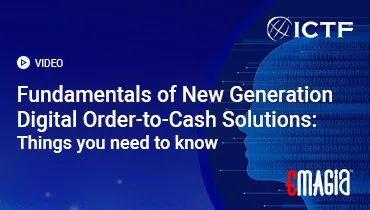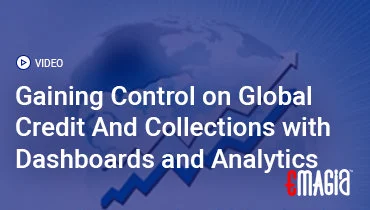AI cash application is revolutionizing the way businesses manage incoming payments. By leveraging intelligent cash application automation, machine learning cash application, automated cash application, and remittance data extraction, organisations can streamline invoice-to-cash automation, reduce unapplied cash, and improve DSO (Days Sales Outstanding) without overloading AR staff.
Introduction: The Rise of AI Cash Application in Accounts Receivable
In today’s fast-moving business environment, accounts receivable automation tools are under pressure to perform faster, more accurately, and with fewer errors. Intelligent cash application solutions using AI, NLP, RPA, automated exception handling and fuzzy matching algorithms are rapidly replacing manual cash posting tasks. Companies that adopt AI-powered cash application report dramatic improvements in remittance matching automation, real-time AR reconciliation, and digital remittance processing. This shift is key to reducing DSO, improving cash flow automation, and unlocking finance efficiency.
Core Concepts: What Is AI-Powered Cash Application & Related Terms
Definition of AI Cash Application
AI cash application refers to systems that use artificial intelligence, machine learning, natural language processing (NLP), robotic process automation (RPA), and intelligent document processing to automate the matching of payments to invoices, post payments automatically, handle exceptions, extract data from remittance information, and reconcile AR with minimal human effort.
Automated Cash Application, Cash Posting Automation & Remittance Data Extraction
Automated cash application often includes cash posting automation—when payments are posted to the ledger without manual intervention—and remittance data extraction, which uses OCR/IDP to pull data from remittance documents (PDFs, emails, lockbox scans). These capabilities help accelerate order-to-cash AI workflows.
Related Concepts: Invoice-to-Cash Automation, Payment Matching Automation, Lockbox Automation
Invoice-to-cash automation covers the end-to-end flow from issuing invoice to collecting payment. Payment matching automation handles identification of which payments go to which invoices. Lockbox automation relates to processing bank lockbox files automatically. All these tie into AI cash application systems for fully digital accounts receivable automation.
Why Intelligent Cash Application Matters for Finance Efficiency
Reducing Manual Work and Operational Costs
Manual matching, chasing remittance advice, checking exceptions eat up time and resources. Intelligent cash application software dramatically cuts those manual tasks, freeing AR staff to focus on strategic work rather than repetitive data entry and exception handling.
Improving Accuracy & Minimizing Errors
Human error in payment matching, mis-postings, incorrectly formatted remittance documents or missing remittance advice can lead to unapplied cash, disputes, or reconciliation mismatches. AI systems with machine learning and fuzzy matching algorithms reduce these errors substantially.
Accelerating Cash Flow & Reducing DSO
By automating payment matching, real-time cash posting, and quickly resolving exceptions, AI cash application helps reduce the time money is tied up in outstanding invoices. This improves cash flow and lowers DSO, giving better working capital availability.
Enhancing Visibility & Financial Control
AR dashboard analytics, real-time AR reconciliation, finance transformation with AI offers visibility into incoming payments, unpaid invoices, risk of bad debts, and trends in payment behaviour. Leaders can respond faster and forecast more accurately.
Key Features of Modern AI Cash Application Systems
Remittance Data Extraction & IDP (Intelligent Document Processing)
Systems extract data from structured and unstructured remittance inputs—emails, PDFs, lockbox files—using OCR and NLP. This feature allows auto-matching even when data is missing or nonstandard.
Auto-Matching Payments & Fuzzy Matching Algorithms
Using fuzzy matching, machine learning, confidence scoring, or predictive payment matching the system can match payments to invoices even when invoice numbers are missing, amounts differ slightly, or remittance info is incomplete.
Exception Handling & Automated Deduction Coding
When payments do not align cleanly to an invoice or set of invoices, systems apply exception workflows. Automated deduction coding helps classify adjustments, overpayments, short pays, promotional deductions, or other customer-specific deductions without manual effort.
Straight-Through Processing (STP) & Self-Learning Cash Application
True STP means payments flow from remittance receipt to invoice match to cash posting without human touch. Self-learning systems improve over time—i.e. the system learns from past corrections, adapts rules automatically, improves matching logic, reduces exceptions.
Integration with ERP, Bank Feeds, Lockbox Automation
Effective AI cash application tools integrate with major ERP systems (SAP, Oracle, NetSuite etc.), receive bank feeds automatically, handle lockbox files, and integrate payment channels and remittance portals.
Real-Time Cash Posting & Real-Time AR Reconciliation
Some AI-powered cash application solutions support real-time posting of payments and real-time reconciliation of AR, giving up-to-date visibility of cash positions and aging invoices.
Analytics, Dashboards & Predictive Insights
Dashboard analytics allow finance leaders to view match rates, outstanding unapplied cash, DSO trends, exception volumes, forecast incoming cash. Predictive tools can forecast which invoices are likely delayed, identify payment patterns, or detect fraud risk.
How AI Improves Accuracy & Reduces Exceptions
Confidence Scoring & Machine Learning Matching
AI models assign confidence to each match—high confidence matches are auto-posted, medium require review, low are flagged for manual intervention. Over time, model learns corrections to reduce flagged cases.
Handling Decoupled and Nonstandard Remittance Formats
Often payment arrives separately from remittance advice or in nonstandard formats. AI-powered cash application system that supports unstructured data and NLP helps locate or infer correct invoice references even when they are missing.
Reducing Unapplied Cash & Over/Short Payments
With automation, systems identify overpayments, short pays, miscodes, promotional deductions more accurately. Automated deduction coding features help reduce unapplied cash, which otherwise sits unresolved and hurts cash flow.
Automated Remittance Matching & Payment Posting
How Automated Payment Matching Works
Algorithmic matching uses invoice number, amount, remittance details. When that fails, fallback to fuzzy logic, customer behaviour history, invoice date vs payment date comparisons. AI helps pick best fit.
Remittance Advice & Document Capture Technologies
Technologies like OCR, IDP, document imaging, parsing email attachments allow capture of remittance advice even if supplier uses scans, PDFs, images, or nonstandard formats.
Posting Payments Automatically into Accounting/ERP Systems
After matching, payments are posted automatically into AR ledger or ERP. ERP integration ensures correct general ledger entries, tax codes, accounts matched. Manual interventions are limited to exceptions.
Order-to-Cash AI: Workflow from Invoice to Reconciliation
Issuing Invoice & Capturing Remittance Expectations
Designing invoices with clear remittance details, customer metadata, payment terms, possible PO references helps. Setting up remittance portals or structured communication helps too.
Receiving Payment & Remittance Data
Payments come through multiple sources: bank transfers, lockbox, checks, credit card, digital channels. Remittance info via email, portal, EDI, scanned documents. System must handle all formats.
Matching & Exception Handling
Using AI tools to match payments; handling short pays, overpays, deductions, disputes. Flagging exceptions for human review and learning from those to improve system accuracy.
Posting & Reconciling in Real Time
Once payment is matched, posting into AR occurs, ledger updated, reconciliation done. Dashboard updates reflect status. Real-time or near real-time cash application improves visibility.
Integration: ERP, Bank Feeds, Document Processing & OCR
Connecting with Major ERPs: SAP, Oracle, NetSuite etc
ERP integration enables auto-posting of matched payments. It ensures consistency of master data (customer IDs, invoice numbers), tax codes, chart of accounts, currency conversions, etc.
Bank File Automation & Lockbox Integration
Bank feeds and lockbox automation help ingest payment data quickly. Automated parsing of bank files saves manual file uploads or handling, accelerates processing.
Intelligent Document Processing & OCR/NLP
IDP and NLP allow the extraction of data from variably formatted documents. Emails, PDF attachments, scanned files are parsed so that payment matching can occur even when formats change.
Metrics & KPIs for Measuring AI Cash Application Success
Match Rate (Percentage of Payments Auto-Applied)
How many payments are matched without manual intervention. High match rates indicate effectiveness of AI, less exception handling, lower staff overhead.
Reduction in Unapplied Cash & Overpayments / Short Pays
Amount or percentage of cash that remains unapplied due to unmatched remittances, miscodes etc. AI should reduce this significantly.
Days Sales Outstanding (DSO) & Order-to-Cash Cycle Time
How quickly from invoice issue to cash receipt and posting. Automation and AI reduce this time, improving cash flow.
Exception Volume & Resolution Time
Number of payments requiring manual review plus how long exceptions take to resolve. Improvement in this core KPI shows system maturity.
Throughput & Real-Time AR Reconciliation Frequency
How many transactions per period, how quickly the AR balance is reconciled. Real-time or near real-time reconciliation improves accuracy and decision making.
Cost Savings & ROI Metrics
Savings in staff hours, manual labour, cost per transaction, reduction in external financing, lower interest on working capital tie-ups.
Benchmarks, ROI & Real-World Case Studies
Benchmarks: Typical Match Rates, DSO Improvements, Exception Rates
Data from vendors shows auto-matching rates around 80-95%, DSO reductions of 20-40%, exception rates dropping with AI after a learning period. For example, Versapay reports significant ROI and reductions in past due payments. :contentReference[oaicite:0]{index=0}
Case Study: HighRadius & Versapay & Invoiced & Quadient Examples
HighRadius automated cash application system speeds up matching, lowers manual efforts. Versapay reports ROI improvements, cost savings and improved cash posting. Invoiced’s CashMatch algorithm improves accuracy. Quadient shows benefits of OCR + AI for unstructured remittance data. :contentReference[oaicite:1]{index=1}
Cost vs Benefit: Investment, Licensing, Staff, Implementation Effort
Up-front investment includes software cost, ERP integration, change management, potentially training. Benefits include labor cost savings, faster working capital turn, fewer disputes and unapplied cash. ROI often shows up in months. :contentReference[oaicite:2]{index=2}
Common Implementation Challenges & How to Overcome Them
Data Quality & Remittance Format Variability
If remittance advice is missing, inconsistent, or decoupled, AI systems can struggle. Overcome via OCR/IDP, supplier education, standard templates where possible, fallback matching logic.
Legacy Systems & ERP Integration Barriers
Older ERP systems may not support real-time bank feeds or API integration. Upgrading or using middleware may be necessary. Also mapping of customer IDs, multiple entities, different currencies introduce complexity.
Handling Exceptions, Short Pays, Over-Payments & Adjustments
Even with automation, some payments will not match cleanly. Important to define clear exception workflows, automated deduction coding, dispute resolution steps. Use AI-assisted exception management.
User Change Management & Adoption
Staff used to manual processes may resist change. Training and clear visibility into benefits (less busywork, fewer errors, faster closing) help adoption. Early wins help build momentum.
Maintaining Accuracy Over Time: Model Drift, Training, Feedback Loops
Machine learning models can drift if new payment patterns emerge. AI cash application solutions must include mechanisms for feedback from human corrections, continuous model retraining, monitoring match-confidence decay.
Future Trends: Cognitive Cash Application, RPA & Self-Learning Systems
Agentic AI & Self-Learning Cash Application
Agentic AI adapts to new remittance formats, customer behaviour, payment channel changes. It learns from exceptions and human input to improve accuracy without manual rule updates. :contentReference[oaicite:3]{index=3}
Use of NLP & Advanced Text-Based Matching
NLP helps parse unstructured remittance advice, email bodies, explanation lines in checks, or text descriptions. It improves matching when structured data is absent.
Predictive Payment Matching & Cash Flow Forecasting
AI can predict which customers or invoices are likely to pay late, identify risk of unapplied cash, estimate amounts that may require adjustments or deduction coding. These insights help finance move from reactive to proactive.
Robotic Process Automation (RPA) for Cash Application Tasks
RPA can automate repetitive tasks like importing bank files, generating reports, limiting manual uploads. Combined with AI, these tools increase throughput and reduce human error.
Touchless Payment Posting & Straight-Through Processing Growth
The trend is moving toward fully automated payment posting, where human intervention is only for very rare exceptions. STP rates improve as tools evolve.
How Emagia Enables Smarter AI Cash Application
Emagia offers a comprehensive AI cash application solution that covers remittance data extraction, auto-matching payments, automated exception handling, IDP, fuzzy matching, real-time AR reconciliation, and integration with leading ERPs. The platform is designed to reduce DSO, cut unapplied cash, improve finance efficiency, and deliver measurable ROI.
Features include straight-through processing, configurable exception workflows, predictive matching and match confidence scoring. Emagia supports touchless payment posting and captures remittance advice from structured as well as unstructured sources. The system adjusts to variations in supplier remittance formats automatically.
Emagia dashboards provide finance analytics showing match rates, exception volumes, unapplied cash totals, and forecasted payments. Leadership and AR teams can monitor performance in real time and identify areas for improvement. Emagia also supports automated deduction coding and digital accounts receivable workflows to reduce manual effort significantly.
Implementation support from Emagia includes onboarding supplier remittance channels, mapping data to your ERP, training AR staff, and continuous improvement via feedback loops so that match-confidence improves over time and exceptions decline rapidly.
Frequently Asked Questions
What is the difference between rule-based and AI-powered cash application?
Rule-based systems follow fixed rules (if-this-then-that) for matching payments to invoices. They often break when remittance formats change or when data is missing. AI-powered cash application learns from past matches and exceptions, using fuzzy matching algorithms and confidence scoring to adapt and improve without needing constant reprogramming.
How much reduction in DSO can I expect with AI cash application?
Typical results from leading vendors show reductions in DSO of 20-40 % with high match-rates, faster payment posting, and fewer manual delays. Actual numbers depend on baseline performance, volume of exceptions, quality of remittance data and integration. :contentReference[oaicite:4]{index=4}
Is it possible to fully automate cash posting even with missing remittance details?
Yes, many AI systems incorporate NLP, IDP and predictive matching to infer invoice references or amounts even if remittance advice is missing or delayed. However, some exceptions remain; these systems require monitoring, human feedback, and robust exception workflows. :contentReference[oaicite:5]{index=5}
What ERP systems work well with AI cash application solutions?
Major ERPs such as SAP, Oracle, NetSuite etc support integration with AI cash application tools. Key considerations include data format compatibility, bank feed access, supplier remittance channels, and flexibility of the cash application platform to accommodate unstructured data. :contentReference[oaicite:6]{index=6}
How does machine learning help reduce unapplied cash?
Machine learning models track past exceptions and corrections, build patterns, and apply fuzzy logic or predictive matching to reduce the number of unmatched payments or unapplied cash. As the system processes more cases, it “learns” what human corrections did and uses that for future matching. :contentReference[oaicite:7]{index=7}
What implementation mistakes should finance teams avoid?
Common mistakes include under-estimating the variation in remittance formats, choosing tools that lack adaptive capabilities, failing to involve AR staff early, not defining clear exception handling workflows, and ignoring continuous learning and monitoring for model drift.



